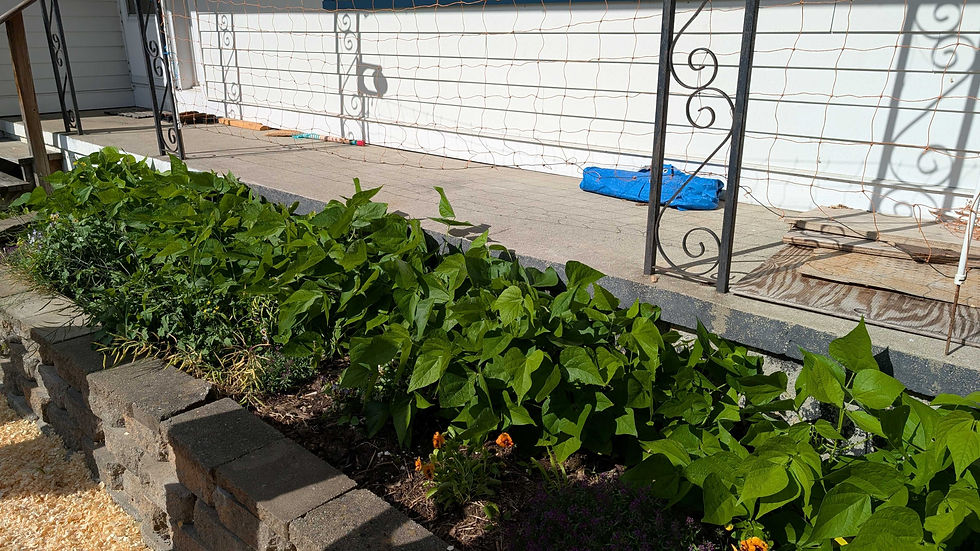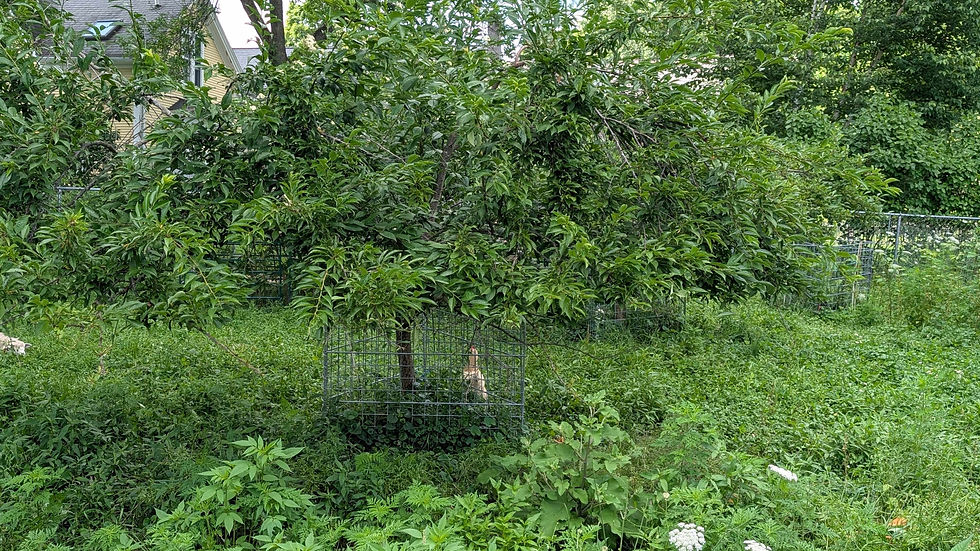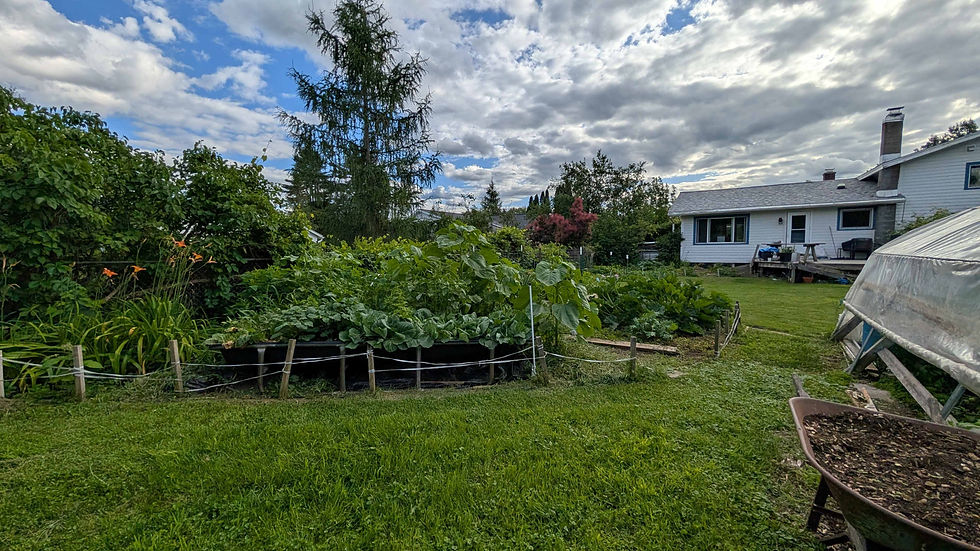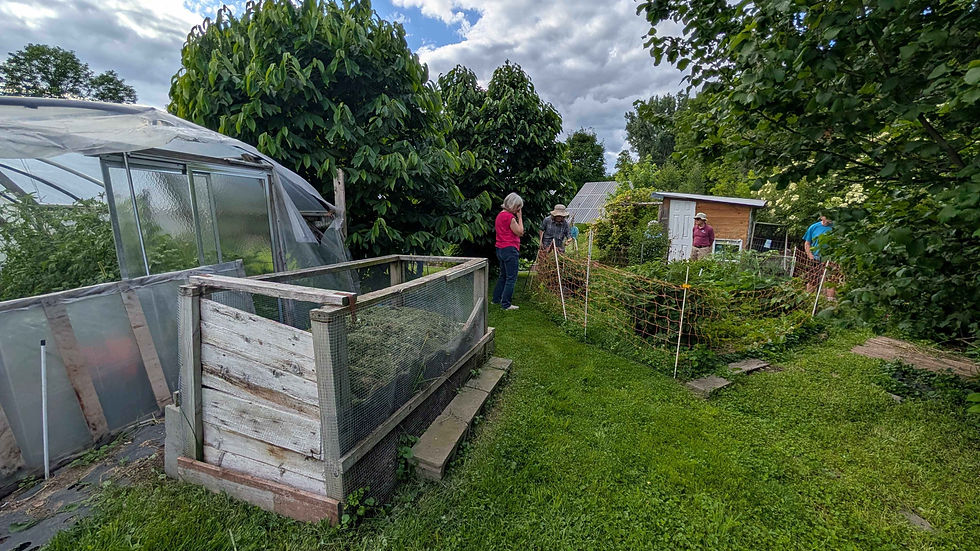Making Homesteading Real
- JU Food Hub member
- Jul 22
- 2 min read
Many of us imagine growing all our own food and having more control over our own wellbeing. Chris and Barry Sims have managed to do this on less than an acre of land in the heart of Jericho Corners. They were gracious hosts for a recent food hub workshop where they shared all sorts of examples of how they make it work.






A small barn houses animals during stormy weather and serves as a chicken coop. The back yard has a lawn with 3-4 fenced in gardens, a hoop house for tomatoes, 2 free–standing solar panels, grape vines, fruiting pawpaw trees, fruiting kiwi vines, potatoes, corn, and on and on. Crops are rotated annually and soil replenished with home-made compost we saw in various bins.







The ingenuity and planning that go into locations of plantings each year were made to look easy or obvious by Barry and Chris. Everyone's growing conditions and situation are different but for these workshop participants, there were many useful nuggets of information to apply to their own situation.

